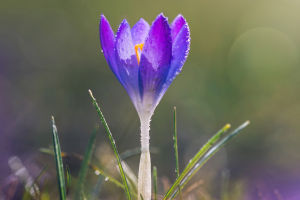Growing Graceful Windflowers
Pulsatilla cernua, commonly known as the nodding anemone or windflower, is a captivating plant renowned for its delicate, nodding flowers and striking foliage.
This perennial herb, native to the cooler regions of the Northern Hemisphere, thrives in specific environments that cater to its unique growing needs.
Pulsatilla cernua belongs to the buttercup family (Ranunculaceae) and is distinguished by its charming, pendulous flowers that range in color from white to pale purple. The plant is adapted to temperate climates and is typically found in woodland clearings, meadows, and rocky slopes. Its graceful blooms and fern-like leaves make it a favorite among gardeners seeking to add a touch of elegance to their landscapes.
11 MUST Grow Pollinator Garden Plants 🐝
Video by Epic Gardening
Ideal Growing Conditions
Climate and Temperature
Pulsatilla cernua thrives in temperate climates with distinct seasons. It is well-suited to regions with cool to mild summers and cold winters. The plant prefers a climate with a good balance of warmth and cold, as extreme temperatures can affect its growth and flowering.
In areas with very hot summers, providing some shade during the hottest part of the day can help the plant thrive.
Soil Requirements
The ideal soil for cultivating Pulsatilla cernua is well-draining and slightly acidic to neutral. The plant prefers a sandy or loamy soil that allows for good aeration and prevents waterlogging.
Heavy clay soils should be amended with organic matter or sand to improve drainage. Ensuring the soil pH is in the range of 6.0 to 7.0 will support optimal growth.
Sunlight and Exposure
Pulsatilla cernua flourishes in partial to full sunlight. In its native habitats, it often grows in dappled light conditions beneath the canopy of trees.
In cultivated settings, providing morning sun with afternoon shade can replicate its natural environment and protect it from the intense midday heat. In areas with cooler climates, full sun exposure can be beneficial.
Cultivation Practices
Planting
When planting Pulsatilla cernua, it is essential to choose a location that mimics its natural habitat. The plant can be grown from seeds or nursery-bought seedlings.
Seeds should be sown in the fall or early spring, preferably after a period of cold stratification to enhance germination rates. Space the plants about 12 to 18 inches apart to accommodate their mature size and ensure good air circulation.
Watering
While Pulsatilla cernua is relatively drought-tolerant once established, it requires regular watering during its initial growth phase.
Water the plant deeply but infrequently, allowing the soil to dry out slightly between waterings. Overwatering or allowing the plant to sit in soggy soil can lead to root rot and other issues.
Fertilizing
Fertilization should be kept to a minimum for Pulsatilla cernua. A light application of a balanced, slow-release fertilizer in early spring can support growth, but excessive fertilization can lead to lush foliage at the expense of flowers. Organic compost can also be used to enrich the soil and improve overall soil health.
Winter Care
In colder regions, Pulsatilla cernua benefits from a layer of mulch during the winter months to insulate the roots and protect the plant from extreme cold. In areas with milder winters, minimal winter protection is required, but mulching can still help maintain soil moisture and temperature.
Pulsatilla cernua is generally hardy but can face challenges such as fungal diseases or pest infestations. Regularly inspecting the plant for signs of trouble and ensuring proper air circulation can help mitigate these issues.
Providing a well-drained soil environment and avoiding overcrowding will reduce the risk of disease.
Whether grown in a garden or as part of a naturalized landscape, Pulsatilla cernua adds a touch of delicate beauty and elegance, enhancing any outdoor space with its charming blooms and graceful foliage.


